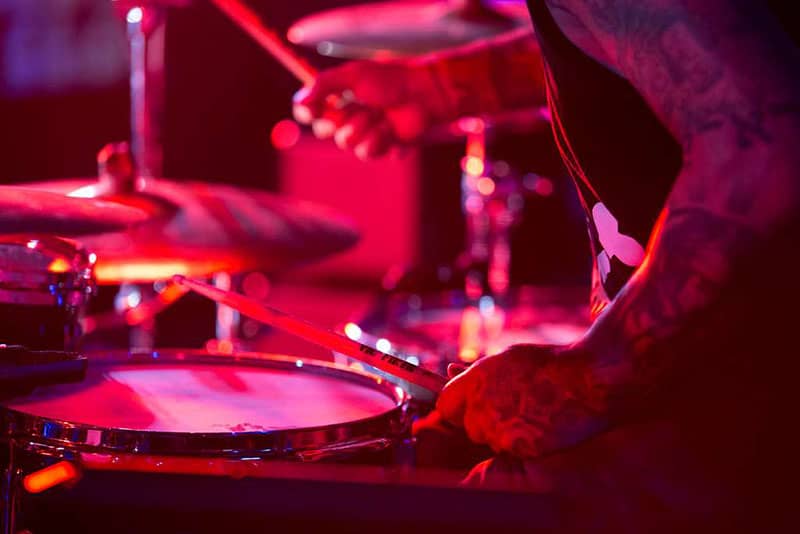Do professional drummers use a click track?
Yes. Most professional settings require you to use a click track, whether they are live gigs or studio recordings. In modern music, live gigs aim to recreate the sound of what can be heard on albums. This often means that tracks are used with the live band. The only way for the musicians to stick with the tracks is for a click track to be used as well.
Professional drummers also use click tracks to practice at home as well as do studio recordings. The studio used to be the main place where click tracks were used. However, they’re now used in most settings.
Why do drummers use a click track?
The purpose of a drummer is to be the timekeeper in a band. The purpose of a metronome is also to keep time for musicians. So, drummers and click tracks go hand-in-hand.
The click track is a vital tool for drummers to improve their skills. To develop good timekeeping abilities, you have to practice with a metronome. You’ll often find that the best drummers are amazing at playing with click tracks. Drummers who struggle with playing to a click tend to struggle with keeping time in a band setting.
Do drummers play to a click live?
Yes. Most professional settings nowadays require the entire band to have a click track in their ears. If the band is using in-ear monitors, there’s a high possibility that a click track is being used for the whole performance. It’s less likely when the band is using wedge monitors on stage.
Some musical styles, such as jazz and classical music, don’t have the musicians using click tracks. This is because the music is up and down when it comes to tempos.
What does playing to a click track mean?
Playing to a click track refers to when you have a metronome clicking while you’re playing. A metronome will click a pulse indefinitely, but a click track will click a pulse that is connected to a song. Once a song stops, the click track will stop as well.
You could play to a click track in a practice room, on a stage, or in a professional studio setting.

